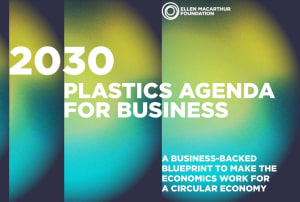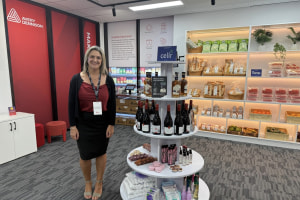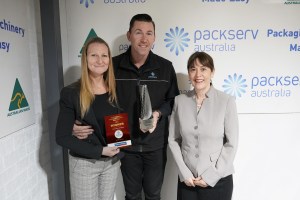Save food packaging is integral to achieving Australia’s goal to halve food waste by 2030. Australian Institute of Packaging executive director Nerida Kelton explains the Save Food Packaging Design Project and findings from its first research report.
Australia needs to build a sustainable food system. It must deliver food security; take into consideration social, economic and environmental impacts; and stop food waste from heading to landfill.
Food waste in Australia has become a $20 billion problem. A staggering 34 per cent (2.5million tonnes) of all food wasted is in households, followed by 31 per cent in primary production.
Then consider the environmental impacts that sit behind food production including water, land, energy, labour, capital, and that far too much food waste is heading to landfill creating greenhouse gas emissions.
This is where innovative save food packaging (SFP) design has a role to play within the food system.
What is SFP
SFP uses innovative and intuitive design features that can contain and protect, preserve, extend shelf life, easily open and reseal, provide consumer convenience, and portion control, all the while meeting global sustainable packaging targets.
To embed SFP design into businesses we first need to understand:
- whether manufacturers consider food waste and loss;
- how packaging technologists are designing food packaging;
- if marketing are ensuring that on-pack communication provides the best messaging to consumers; and
- what the barriers are to implement SFP strategies.
For the Save Food Packaging Design Project, part of the Fight Food Waste Cooperative Research Centre (CRC), the Australian Institute of Packaging (AIP) and RMIT have released two stakeholder industry insight reports to set a baseline for current design practice and enable a path forward for areas of improvement.
Industry insights
The SFP Design Project has completed two reports: Industry Insights Report: Stakeholder Online Survey of Product-Packaging Design Processes and Industry Insights Report: Stakeholder Interviews of Product-Packaging Design Processes, which reflect the current food and packaging industries’ perceptions and practices of food waste and SFP.
The reports have been produced by AIP in collaboration with RMIT.
The second report reviews the expert knowledge and perceptions from stakeholder interviews, which represented a range of organisations in the food industry, evaluating current SFP design and system implementation techniques.
Stakeholders’ feedback from the interviews
- Considerations of SFP are currently occurring primarily at the beginning of the new product packaging development (NPPD) process.
- Shelf life of a product is the first and most important consideration within NPPDs.
- Consumer food waste data is relatively unknown within the industry, so instead it relies heavily on consumer feedback and complaints for packaging design improvements.
- Consumer demands and trends change quickly, which makes it difficult for the food industry to design appropriate products.
- There is a need for enhanced consumer education on food waste versus packaging waste.
- Organisations were divided about marketing SFP to consumers. While some said it was unnecessary, others saw it as essential. Further research on the impact of marketing SFP to consumers may be required.
- Interviewees reported trade-offs between achieving the 2030 Food Waste Targets or meeting the 2025 National Packaging Targets.
- Case studies and training modules for roles and sectors were identified as the most appropriate form of SFP design criteria to be implemented into organisations. These are being developed by the Australian Institute of Packaging (AIP).
Recommendations
Clear definitions of food loss and waste
There are still varying interpretations of what constitutes food loss and waste. A position paper needs to be prepared by AIP, the Fight Food Waste CRC, and its participants to clearly lay out these definitions.
Shelf life is the key to NPPD
The shelf-life of new product packaging should be considered throughout the design (NPPD) process. Achieving the set shelf-life, determined during the brief stage of product-packaging design, will ensure quality and safety throughout the supply chain and ultimately within consumers’ homes.
Overcoming barriers to the adoption of SFP criteria
The costs of implementing SFP and the return on investment are key barriers to the adoption of SFP Design.
Consumer food waste education vs packaging
Participants communicated their concerns on the current consumer trend that vilifies packaging, specifically plastic packaging. This highlights the need for enhanced consumer education on both the environmental and food safety elements embedded within the design of current and new product packaging.
Marketing SFP benefits to consumers
It is encouraged that marketing focuses more on SFP features to assist in consumer education of food waste issues. On-pack communication was demonstrated as one form of communication, however as the demand for smaller pack sizes increases, there is an opportunity to explore alternative techniques. Active & intelligent (e.g., EMAP, time temperature indicators, sensors, scavengers, QR codes) and retail marketing (e.g., shop talkers, which utilise the retail space rather than on-pack information) should be considered when designing product information communications.
Understanding how consumers use packaging
More assessment is required of how packaging features and SFP strategies are understood and used by consumers. The important connections between packaging design and their actual use could be strengthened through new collaborations and opportunities.
SFP design criteria design and deployment
There is significant appetite in Australia’s food and packaging sector for the deployment of the SFP design criteria and supporting material amongst food and packaging supply chain stakeholders. Building upon the work currently undertaken by the AIP, the criteria will provide detailed explanations of the core SFP strategies such as: portion control; resealability; on-pack communication; and extension of shelf life and barriers. This will arm packaging technologists, innovation, R&D, and marketing managers with the tools to integrate SFP their product packaging design.
SFP case studies and training material
The interviews revealed organisations want practical examples to illustrate how packaging features can reduce food waste. Case studies and training courses were viewed as beneficial assets rather than generic checklists. Product specific guides to how save food features can be integrated into product packaging formats should also be encouraged. The AIP has commenced this work.
Together with the stakeholder survey results in Report 1 and a completed literature review, this multi-method, multi-disciplinary project will guide future research and form a baseline for the food and packaging industry.
It is recommended these surveys be repeated after the rollout of the SFP design criteria and framework that is being developed through the AIP. Doing so will reveal if there has been greater industry adoption of SFP design strategies, perceptions, and NPD processes.
The AIP hopes this research is just the start of many conversations around how improved SFP design can help minimise food waste all the way across the value chain to the household.
We look forward to working with food and beverage manufacturers to design innovative SFP solutions that offer the lowest environmental impact and the maximum minimisation of food waste wherever possible.
Industry voices behind SFP
The Australian Institute of Packaging (AIP) is the project leader for the Save Food Packaging Criteria and Framework 1.2.1 project. This includes a Save Food Packaging Consortium made up of leaders in SFP design and innovations to ensure the guidelines developed are practical for the industries they will serve.
The Consortium is made up of the Australian Institute of Packaging (AIP) as project lead and RMIT as the Research Partner. Project contributors are Zipform Packaging, Sealed Air, Multivac, and APCO. Project partners are Plantic Technologies, Result Group and Ulma Packaging. The Extension Network consists of Australian FoodCold Chain Council, Australian Food and Grocery Council, and Australian Institute of Food Science and Technology.
Industry Insights Report: Stakeholder Online Survey of Product-Packaging Design Processes
Industry Insights Report: Stakeholder Interviews of Product-Packaging Design Processes






